INTRODUCTION
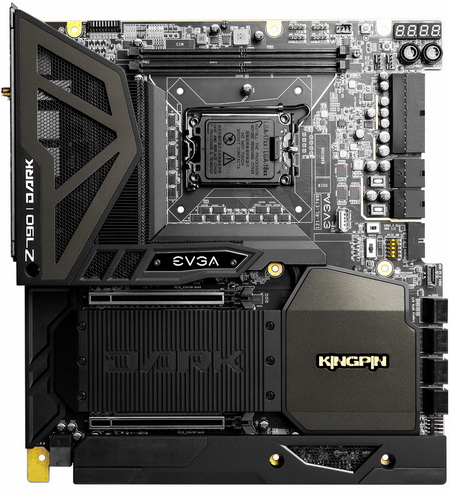
My very first 30386 system back in the early 90's had a genuine Intel CPU inside and aside the Cx486S by Cyrix back in 1994 and the 4086 DX4-120 and Athlon XP CPUs by AMD which i got in 1996 & 2000 respectively every other system I’ve ever owned had an Intel CPU inside. It's no secret really that most of the time Intel has done better compared to AMD (at least in the consumer market) but aside CPU and memory performance there's always been one more thing I’ve considered to be extremely important when building a new system, motherboard quality and features. This is actually something I’ve pointed out numerous times in past reviews and yes, even though since the X570 series chipsets AMD partners have introduced some impressive models (with X670E models being the latest) there are some Intel based motherboards which seem to be one step ahead. The latest Z790 DARK K|NGP|N Motherboard combines all of EVGA's knowledge to date and judging by my past experience with their products it should prove to also be one such model.
Based on the philosophy of intelligent innovation, market knowledge, and the real time operation, EVGA continues to identify the need in the market place and providing the solution to that need. By offering product differentiation and other customer focused programs, EVGA is a clear leader in all categories: etail, retail, distribution, and system builders. With headquarters in Brea, CA, EVGA's global coverage includes EVGA GmbH in Munich, EVGA LATAM in Miami, and EVGA Hong Kong. For further information online about EVGA, visit https://www.evga.com.
The Z790 DARK K|NGP|N motherboard by EVGA sports a 21-phase digital VRM, is compatible with Intel's 12/13th generation LGA1700 CPUs (for Z790 reviews I’ll be using the Intel Core i9-13900k) and just like its predecessor it fully supports DDR5 RAM (up to 64GB clocked at 8000MHz and above) and PCIe 5.0 cards (two EMI shielded and reinforced x16/8 full length slots). Unfortunately for reasons i can't figure out Intel didn't build their Z790 chipset around the PCIe 5.0 standard from the ground up and so Gen5 SSDs are not really supported by such motherboards (at least not without cutting your graphics card host bandwidth in half - some Intel partners have done so) and so because of that the Z790 DARK K|NGP|N sports a total of three PCIe 4.0 Gen4 M.2 sockets. Other features include a 14-layer PCB for increased durability and performance, 100% copper heatsink with twin fans for the VRM, full backplate, single PCIe 3.0 x4 slot, six native Intel SATA 6Gb/s ports (support RAID 0/1/5/10), two ASMedia (ASM1061) SATA 6.0Gb/s ports, 4 ARGB headers, right angled ports for both power and SATA, Marvel 10GbE Ethernet port, Intel i226-V 2.5G Ethernet port, Intel AX211 dual band Wi-Fi 6E/BT v5.2 module and the Realtek ALC1220 7.1 onboard sound card. DARK motherboards by EVGA are aimed towards enthusiasts and overclockers so once again this model is equipped with numerous features to accommodate such users including a multi-function indicator, power and reset buttons, clear CMOS buttons (internal/external), safeboot button (boots directly into the BIOS without changing your settings - handy if your system will not boot), PCIe disable switches (allow the end user to disable PCIe slots for troubleshooting), CPU slow-mode switch (can be used to change the CPU ratio on-the-fly to minimum), BIOS update button (external) and dedicated USB 2.0 port, triple-bios selection switch and a Probelt connector. As for available connectivity EVGA has added a PS/2 port, two USB 2.0 ports (internal headers), three USB 3.2 Gen1 Type-A ports (2 rear and 1 via internal header), 5 USB 3.2 Gen2 Type-A ports (rear), USB 3.2 Gen2 Type-C port (internal header), USB 3.2 Gen2x2 Type-C port (rear), Marvel 10GbE RJ45 port, Intel i226V 2.5 GbE (10/100/1000/2500) RJ45 port and the Realtek ALC1220 High Definition Audio onboard audio ports. So, time to see what the latest addition in the ever growing DARK family of motherboards by EVGA is capable of.
SPECIFICATIONS AND FEATURES

PACKAGING AND CONTENTS
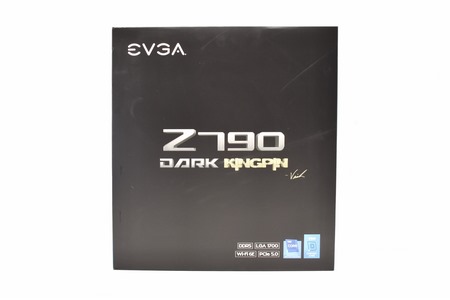
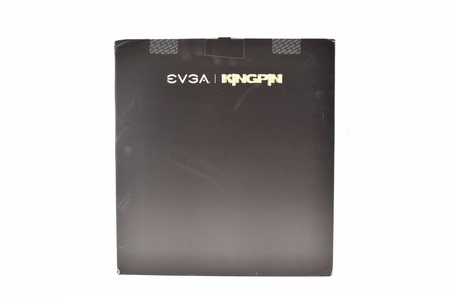 Exactly like all their past DARK models EVGA once again uses a black box that just has their logo and the model name at both the front and rear.
Exactly like all their past DARK models EVGA once again uses a black box that just has their logo and the model name at both the front and rear.
The motherboard is placed right between two black pieces of foam (the rest of the bundle is placed inside an accessory kit box).
EVGA never cuts corners in regards to bundle contents and so the Z790 DARK K|NGP|N is accompanied by the standard full size virtual guide (made out of thick plastic), dual WiFi Antenna, four SATA 6Gb/s Cables, probelt voltage measurement sensor, three M.2 screws, motherboard mounting screws, 10 very tall standoffs, plastic case badge, compact USB flash drive (contains the initial drivers) and the installation quick guide.
THE Z790 DARK K|NGP|N
Details make a great product and the full-size plastic guide EVGA offers can be extremely useful when building or tweaking your system.
Just like the Z690 DARK the Z790 DARK has a professional/industrial look which i really like.
The massive aluminum heatsink paired with two 40mm high-speed fans should be enough to keep the 21-phase digital VRM temperatures in check.
On the other hand, the Z790 chipset is passively cooled by a medium sized heatsink covered with a piece of plastic that has the K|NGP|N logo on it.
By using just two DIMM slots the Z790 DARK KINGPIN can support DDR5 modules up to well over 8000MHz in speed (64GB max capacity).
Typically, at the top left corner we find two LED post indicators, safeboot and clear CMOS buttons, two CPU PWM fan headers, 4 ARGB headers, and the power on/off and reset buttons.
Both the motherboard power connectors and the USB 3.0 front panel connector are angled for easier reach.
Next to these angled connectors we find the BIOS update USB port and the PCIe disable, CPU slow-mode and triple-bios switches.
The G2 and 8 SATA data connectors are all placed right next to each other at the lower right of the motherboard.
The internal USB headers, onboard speaker and the PCIe 4.0 x4 slot are all located on the lower end of the motherboard under rubber covers and next to the extra 6-pin PCIe power connector (according to EVGA this connector provides dedicated power to the PCIe x16 slots, augmenting the +12V power provided by the 24-pin and the GPU directly).
As mentioned earlier the Z790 DARK K|NGP|N sports two reinforced PCIe 4.0 x16 slots.
Removing the large heatsink at the center reveals the three Gen4 M.2 sockets.
Moving at the rear I/O we find the clear CMOS and BIOS update buttons, PS/2 connector, two USB 3.2 Gen1 ports, two Antenna connectors, five USB 3.2 Gen2 ports, 10GbE Ethernet port, 2.5GbE Ethernet port, USB 3.2 Gen2x2 Type-C port and the 7.1 analog/digital audio output.
I believe that all high-end and above motherboards should come with backplates so the fact that EVGA has been doing this (for the most part at least) is a good thing and yes, the Z790 DARK K|NGP|N motherboard is no exception.
As mentioned earlier for this test I’ll be using the Intel Core i9-13900k paired with Team Groups latest T-Force RGB 32GB 6400MHz CL40 DDR5 kit and the 1TB NFP425 SSD by Neo Forza.
With the AMD Radeon RX 7900 XT installed the system is now ready to boot.
Z790 DARK KINGPIN V1.14 BIOS
The BIOS tabs have remained almost the same since the previous DARK models so once again from the main screen you can choose between loading preset and automatic overclocks (Gamer Mode and OC Robot), load the default settings or enter the BIOS and adjust settings on your own.
As with previous models almost everything related to overclocking is placed under the OC Tab. Here you can change the multiplier for both the P and E cores, set the BCLK frequency and of course adjust every voltage you could ever want to or have the need to adjust.
As always from the Memory tab you can use one of the available XMP profiles, set the frequency, adjust voltages and of course you can also adjust the timings and enable/disable the write function.
Under the Advanced tab you can access the various CPU technologies (including disabling the E/Atom cores), check information on the CPU and of course adjust everything else related to the mainboard (including resizable bar support) and all the included peripherals such as the audio card, LAN and fans.
Of course, as always you can adjust the time and date and all the various boot options from inside the Boot tab.
Let's not forget that from the EXTRAS+ drop down menu you can perform a stress test, test for maximum OC automatically, load OC pre-sets and perform BIOS updates.
Finally, from the save and exit tab you can save your BIOS settings into various profiles, override the boot sequence and restart the system.
ELEET X1 SOFTWARE
If you'd like to skip entering BIOS you can monitor and overclock your system using the ELEET X1 software by EVGA.
As you can all see here you have almost every CPU overclock setting available in the BIOS, just slightly easier and faster to navigate.
The same of course applies to the RAM since you can also tweak timings from within the ELEET X1.
Typically, the software also has a health monitoring tool available, information on the system and lighting adjustment for both the onboard and ARGB/RGB headers (9 effects).
TESTING METHODOLOGY
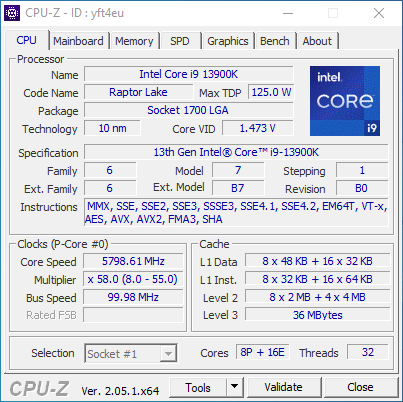
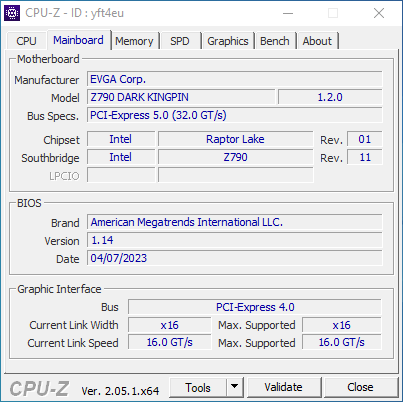
Exactly like used to do in the past each mainboard to arrive in the lab will get mounted on an open-air test bench and will be used for no less than two full weeks (daily tasks and gaming) with a fresh Windows 10 Pro installation. All motherboards arriving here will be tested with the top CPU of that line available to me at the time of each review (I9-9900K for Z390/I9-10900K for Z490/I9-11900K for Z590/I9-12900K for the Z690/Ryzen 9 5900X for X570 and B550/7900X for X670E and B650E/13900K for Z790) together with 16GB (2x8GB) DDR4 4GHz RAM for the Z390/Z490 motherboards, 32GB (2x16GB) DDR4 4GHz RAM for the Z590 and X570S/B550, 32GB (2x16GB) DDR5 6GHz for X670E and 32GB (2x16GB) DDR5 6.4GHz RAM for Z690/Z790 motherboards. Now I don’t know if I will need to change this anytime soon but for now the Intel I9-9900K, I9-10900K and I9-11900K CPUs in each review will be set at 5000MHZ (CPU ratio set to 50 - of course voltages may vary slightly from motherboard to motherboard - RING/Cache frequency at 4700MHZ), the Intel I9-12900K CPU at 5.2GHz (3.7GHz for the E-Cores / RING ratio set at 43), the AMD Ryzen 9 5900X CPU at 4500MHz, the AMD Ryzen 9 7900X CPU at 5.4GHz and the Intel Core I9-13900K CPU at 5.8GHz (4.7GHz E-Cores / RING ratio set at 49).
I did think about pushing each motherboard to the max to see which is the better overclocker but 5.2/5/4.5/5.4/5.8GHZ 24/7 is more than plenty today, not only in terms of performance but also temperatures (not to mention there are colleagues of mine who have been focusing on maximum overclock potential so that’s also out there). Instead i decided that it'd be far more interesting (not to mention accurate) to see which motherboard is the fastest when using the same exact hardware components/configuration (CPU/RAM/COOLER) with the same exact overclocking frequencies */**. To figure that out I’ll be using several benchmarking programs*** (6 repeats after which the average numbers will get recorded in the charts) like AIDA64, CINEBENCH R20, CPUZ, Passmark Performance Test, RealBench and the Sisoftware Sandra Titanium 2020 version. Needless to say, that between different system configurations these charts also do a great job pointing out the difference in CPU performance.
* Charts will contain other system configurations as well in order to better showcase the performance of each reviewed system.
** Surpassing 4.7GHz with the Ryzen 9 5900X on all cores proved impossible so I chose 4.5GHz as the most balanced choice for all my tests (besides, the latest Intel CPUs in the charts could also climb higher than 5GHz on all cores).
*** To showcase performance differences between E-Cores enabled and disabled on the Intel Core I9-12900K (RING 43 for when enabled and RING 49 for when not) I’ll also be using the latest versions of Horizon Dawn Complete edition, F1 2022 and Forza Horizon 5 (1080p resolution at ultra-high/max settings – average numbers recorded from 3 repeats for each).
TEST RESULTS - AIDA64 / CINEBENCH R20


TEST RESULTS - CPUZ / PASSMARK PERFORMANCE TEST
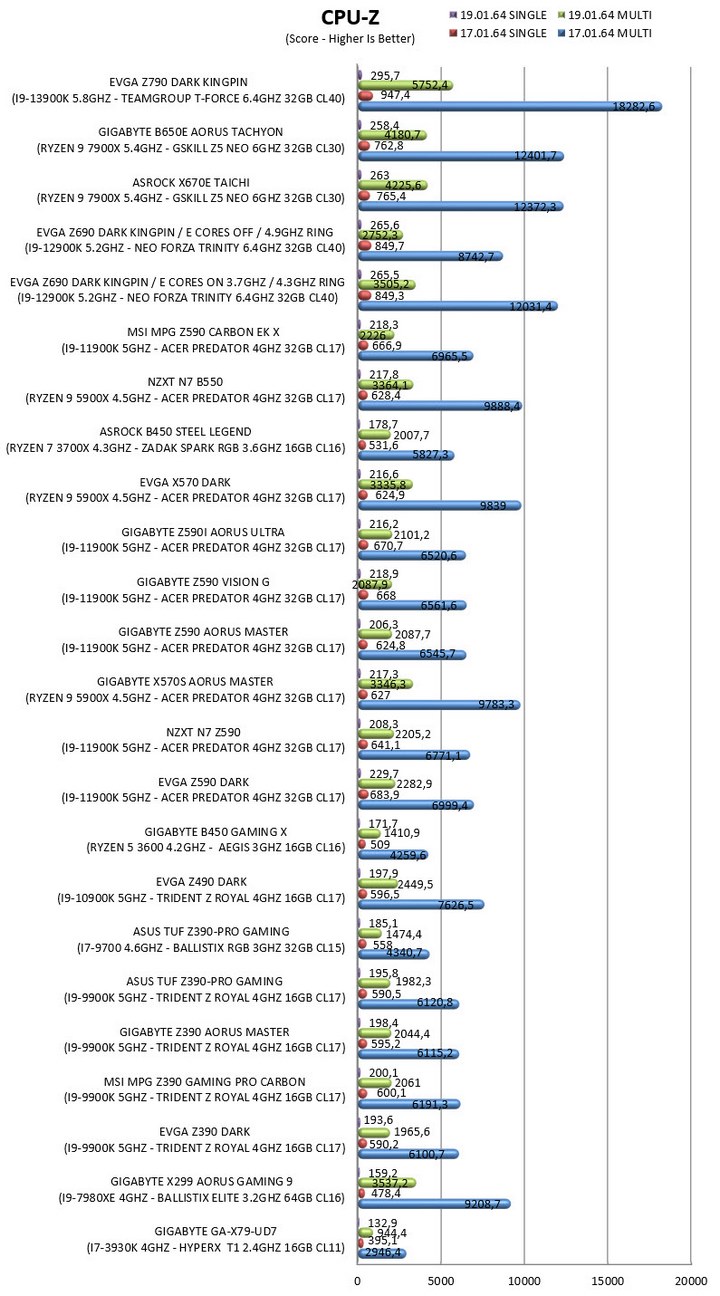
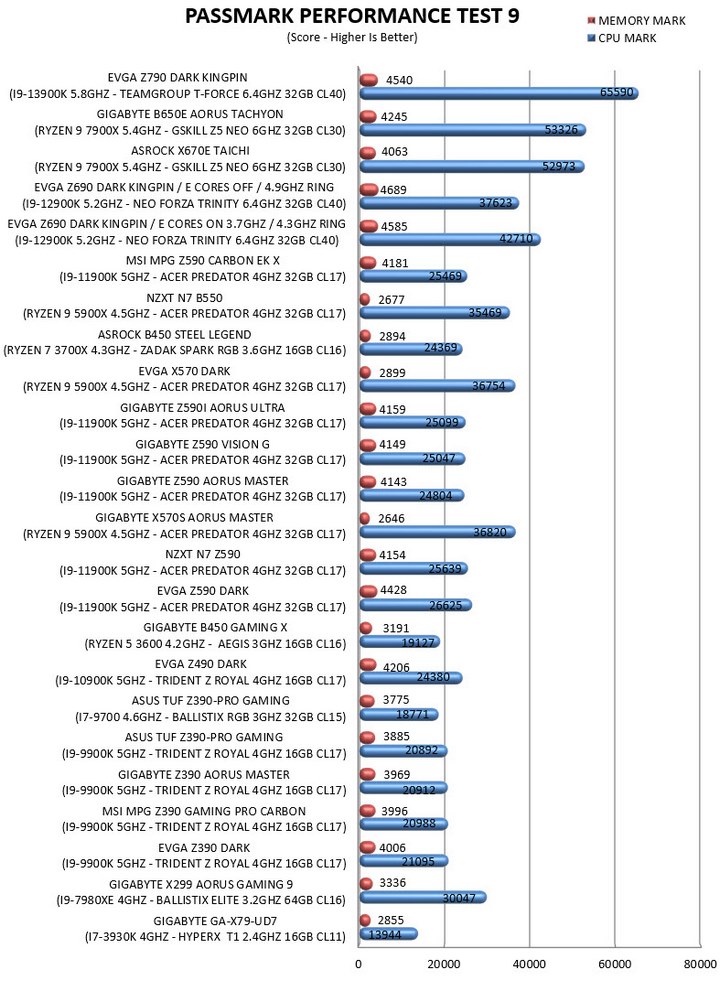
TEST RESULTS - REALBENCH / SISOFTWARE SANDRA TITANIUM 2020
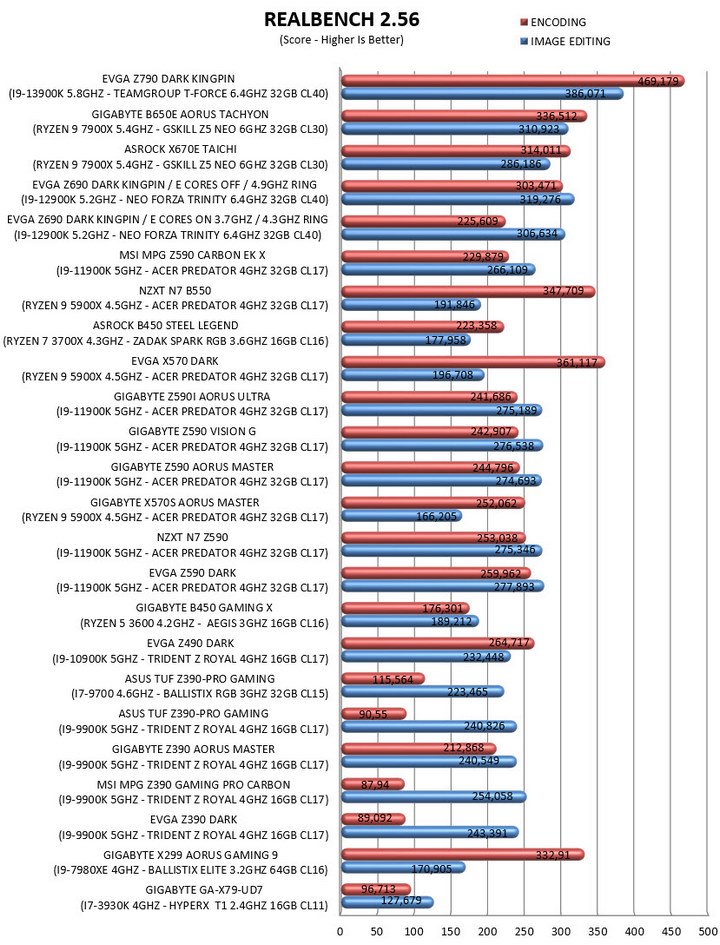
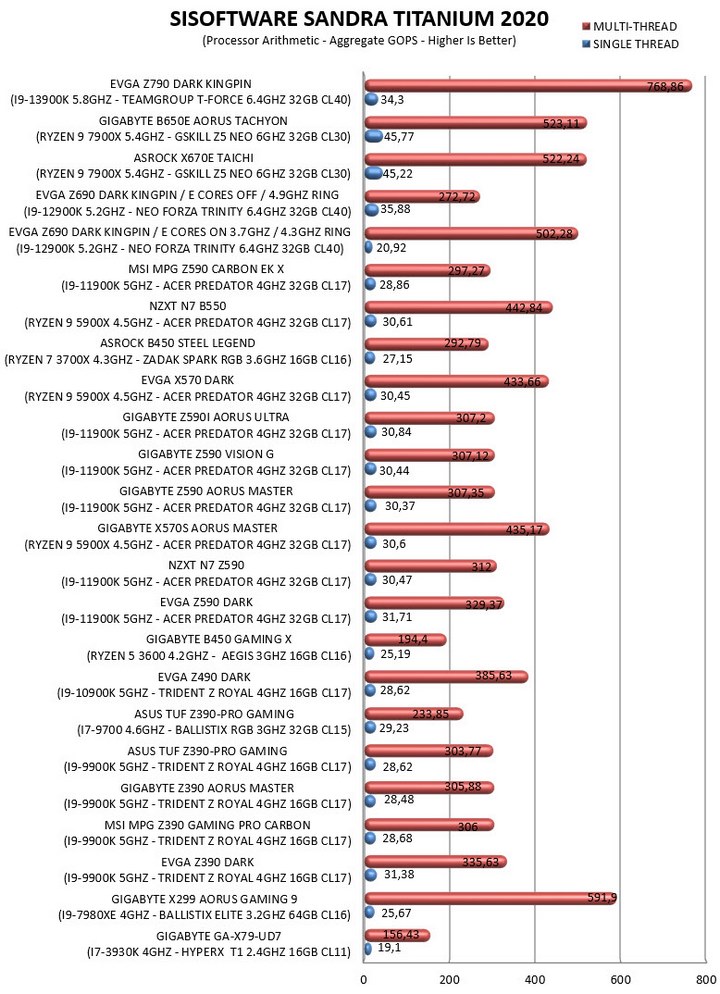

CONCLUSION
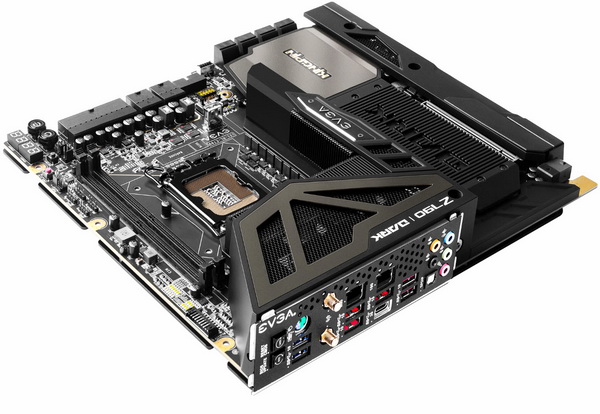
It may have taken a lot longer than initially planned for me to get my hands on the EVGA Z790 DARK K|NGP|N (alongside several others) but it finally happened and as you can all tell from all the posted charts it was well worth the wait. Overclocking the P-Cores of the Intel Core i9-13900K at 5.8GHz with just 1.35V was a breeze (still since reported voltage is nowhere near to what i chose i really don’t suggest using such overclocks 24/7, not unless you have a very good cooler) and as for E-cores it took 1.28V for a stable 4.7GHz (RING was set at 4.9GHz). The good news is that even with a rather old tri-fan AIO like the Fractal Celsius+ S36 Prisma the i9-13900K never surpassed 92 degrees Celsius with the above settings, even under stress testing so you don’t need something out of this earth to keep its temperatures in check. The Z790 DARK K|NGP|N scored very high across the board however, not just in terms of CPU performance. Memory performance is pretty much on par with that of its predecessor and as for its network capabilities the 10GbE NIC by Marvel easily surpassed 830Mb/s when connected with the QNAP QSW-804-4C switch. Unfortunately, however once again EVGA chose to not add an HDMI/DP connector on their Z790 DARK K|NGP|N and even though i do understand where they are coming from the truth of the matter is that for troubleshooting purposes this can come very handy (which is why i do hope they add it in future models).
With a current retail price set at around USD799 inside the USA and at around 840Euros inside the EU the Z790 DARK K|INGP|N motherboard by EVGA is clearly among the most expensive LGA1700 models in the market today. With such a specific target audience however the EVGA Z790 DARK K|NGP|N should have no issues becoming a hit (as far as I’m aware it already is) and since it delivers on everything that really matters the Platinum Award is in order.

PROS
- Excellent Build Quality
- OC Potential (Dual Fan Cooled 21 Phase Digital VRM)
- 2 Reinforced & EMI Shielded PCIe 5.0 slots
- OC Features (PCIe Disable Switches / Slow Mode / Safe Boot / Triple BIOS / Clear CMOS Buttons / USB BIOS Update Port)
- Three M.2 PCIe 4.0 Sockets
- Available BIOS Settings
- Angled Connectors
- 10GbE & 2.5GbE Ports
- Bundle
- 3 Year Limited Warranty
CONS
- Price (For Some)
- Dual DIMM Design
- No Display Outputs

 O-Sense
O-Sense





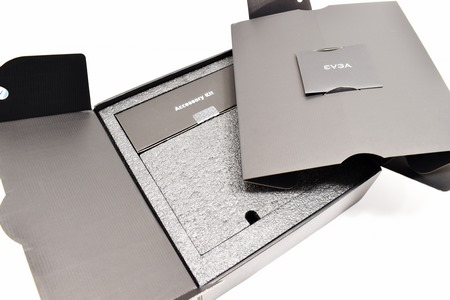
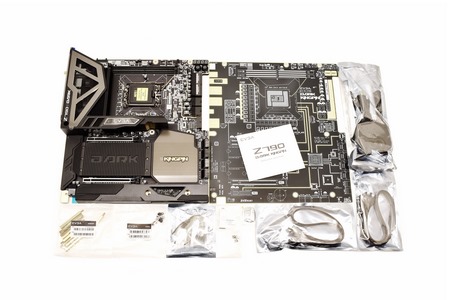
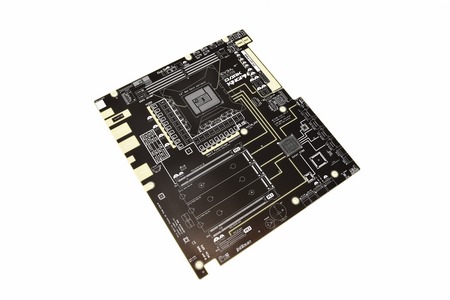
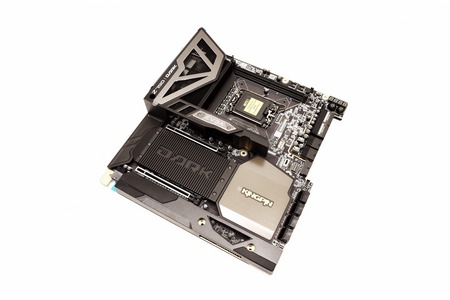
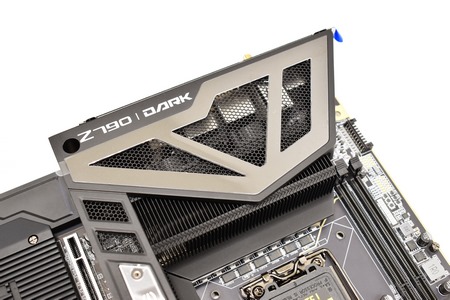
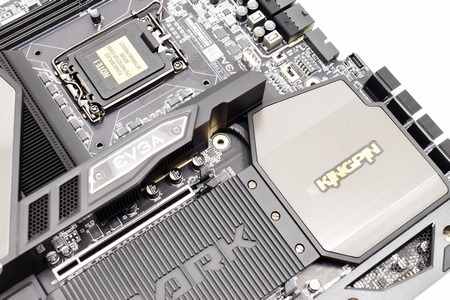
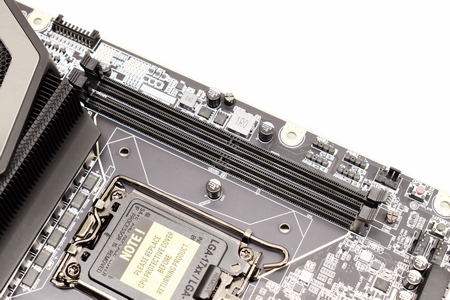
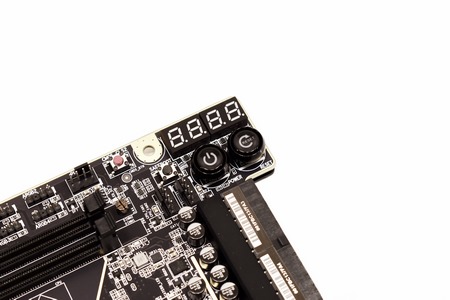
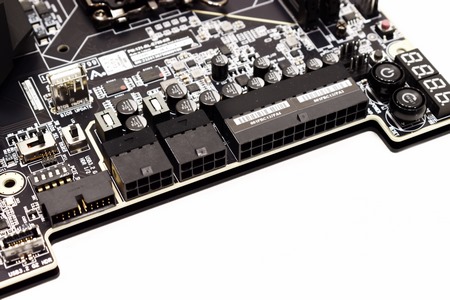
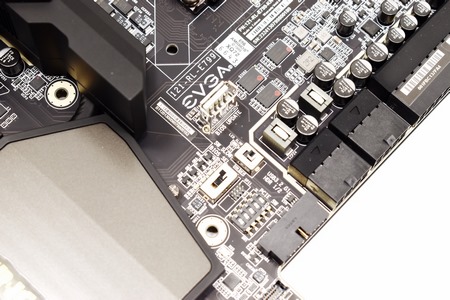
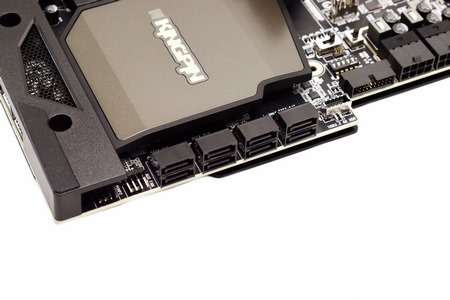
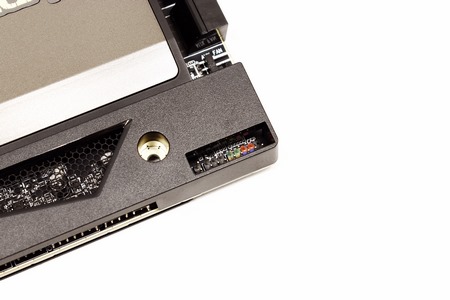
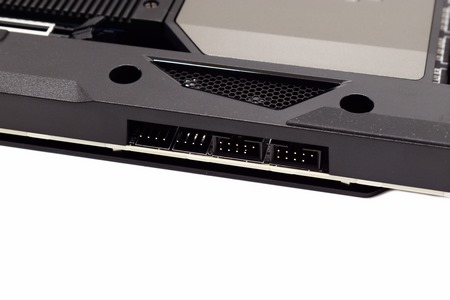
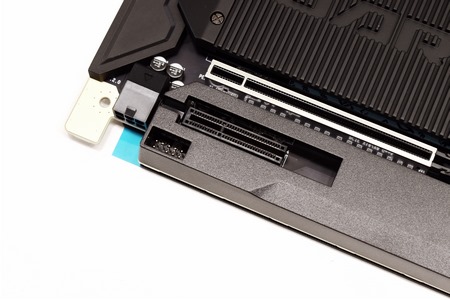
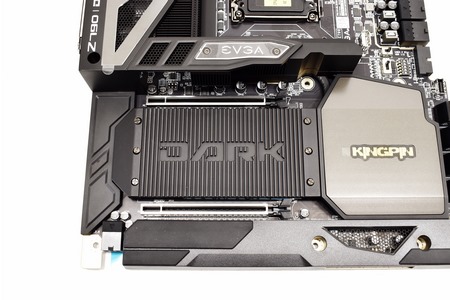
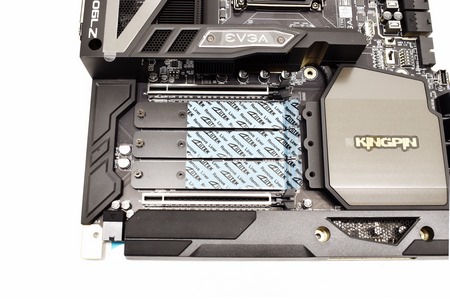
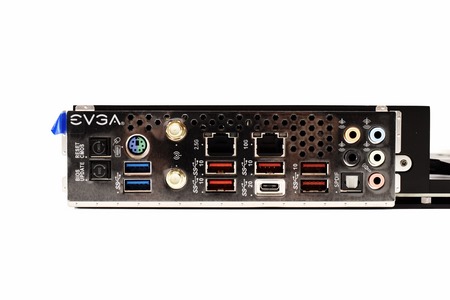
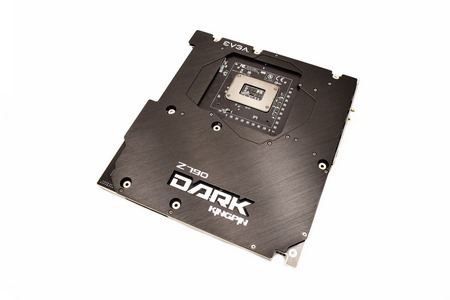
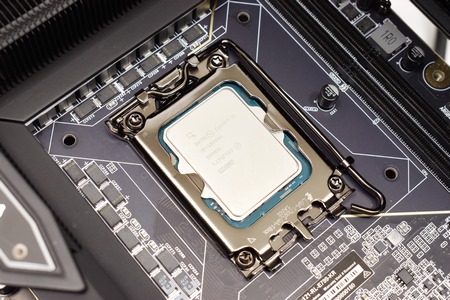
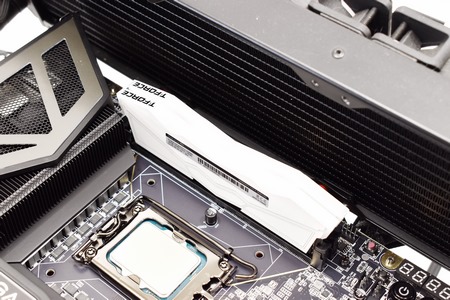
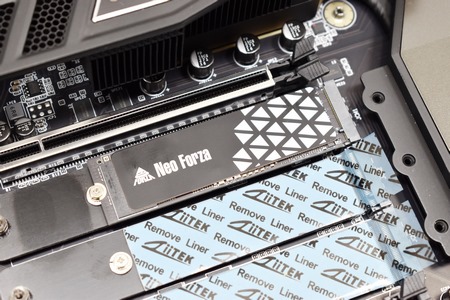
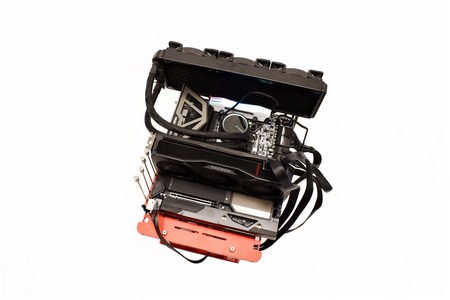
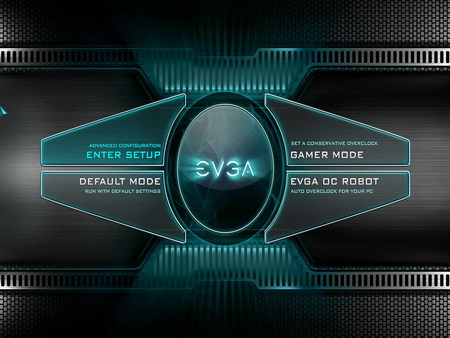
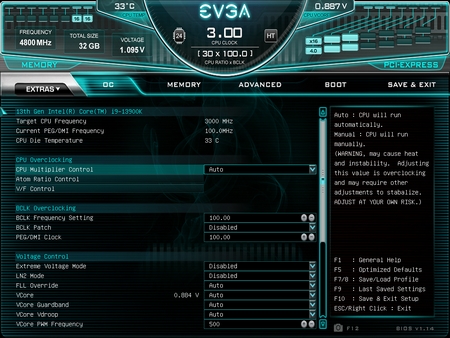
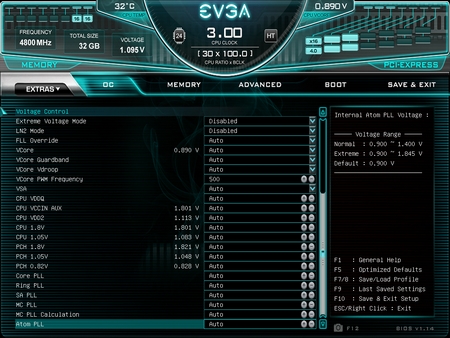
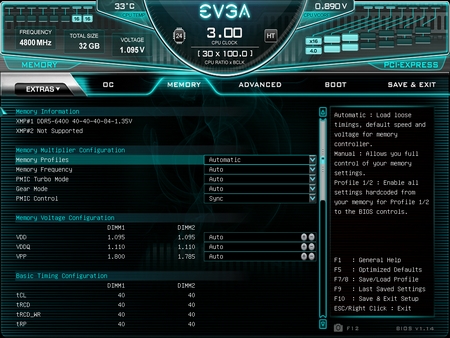
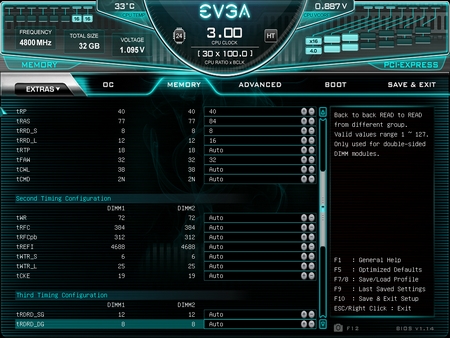
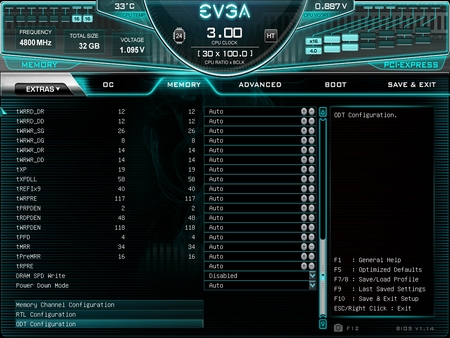
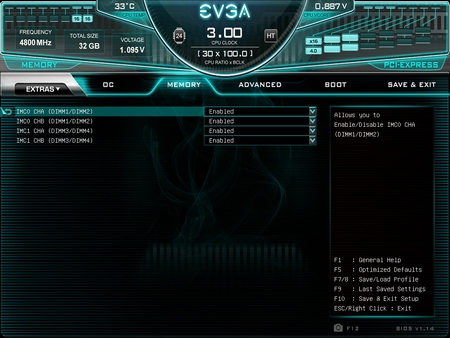
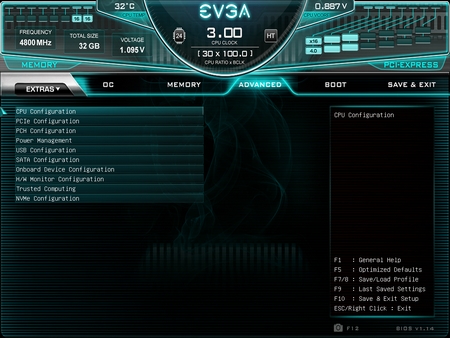
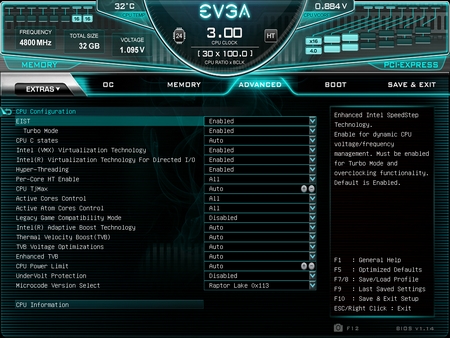
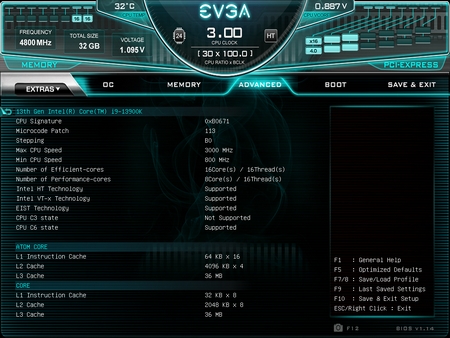
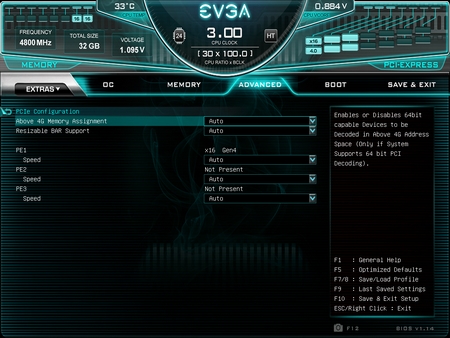
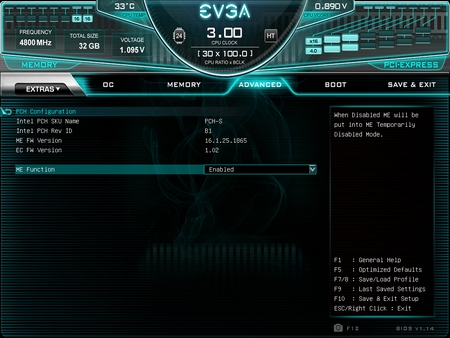
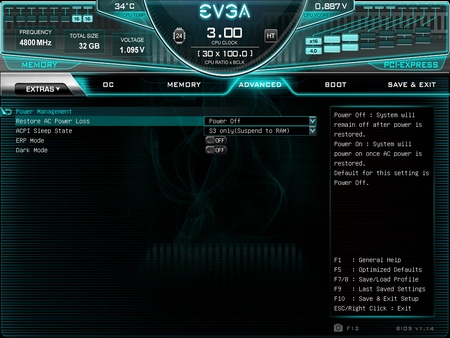
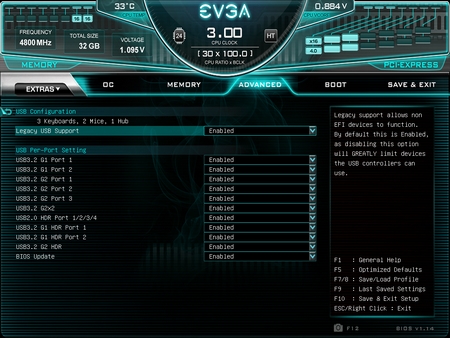
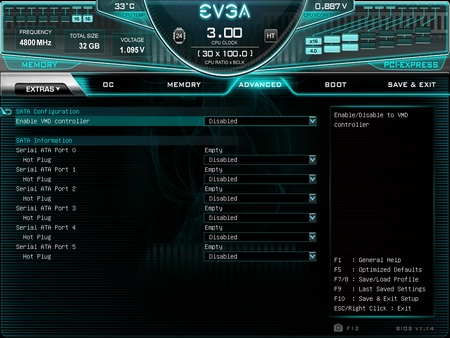
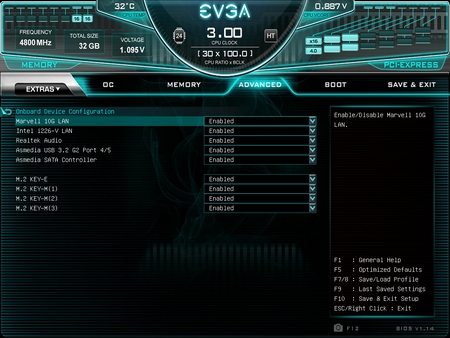
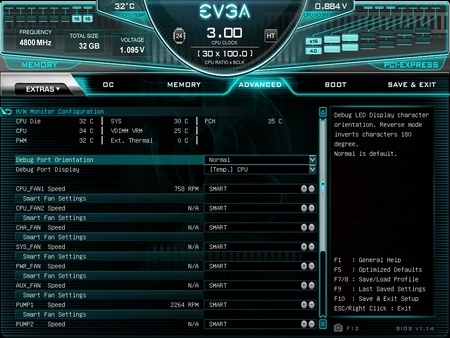
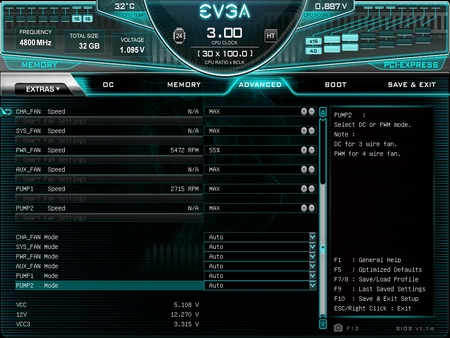
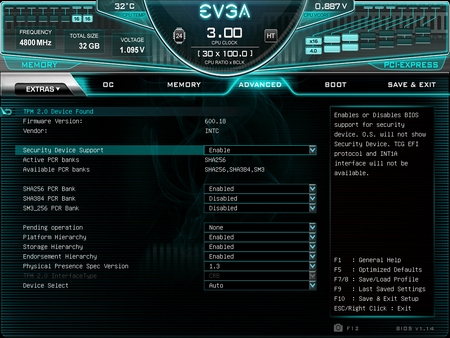
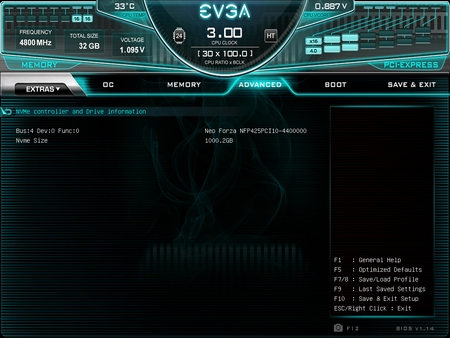
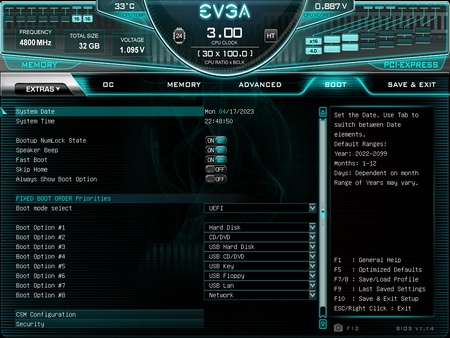
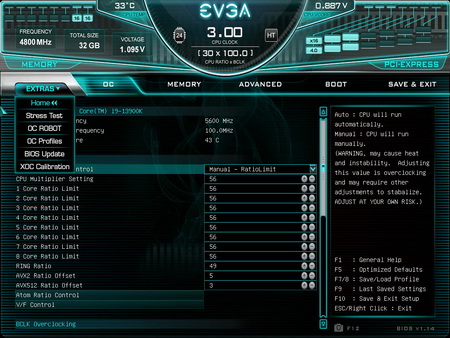
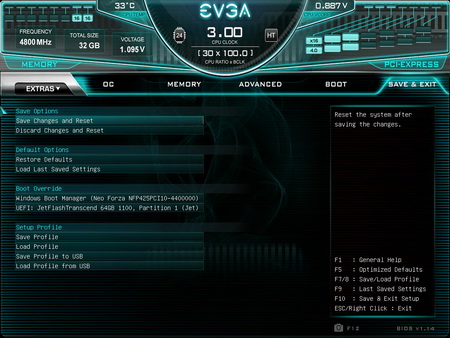
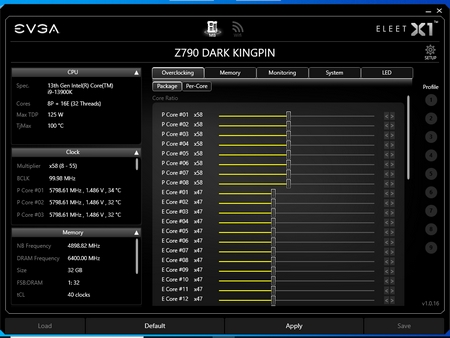
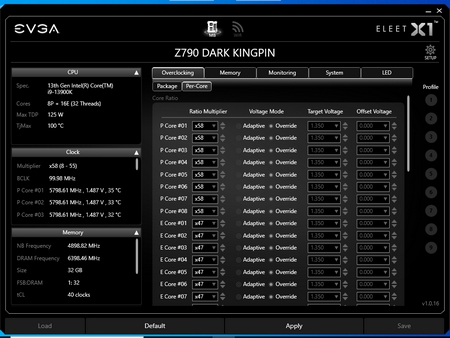
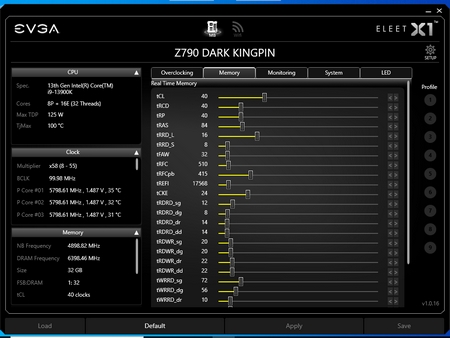
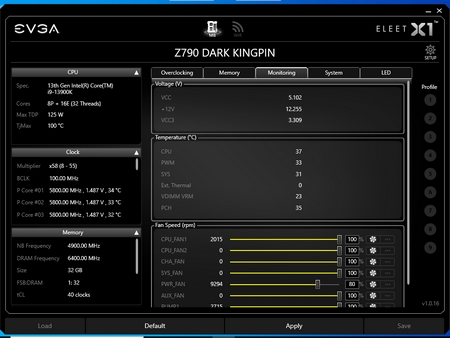
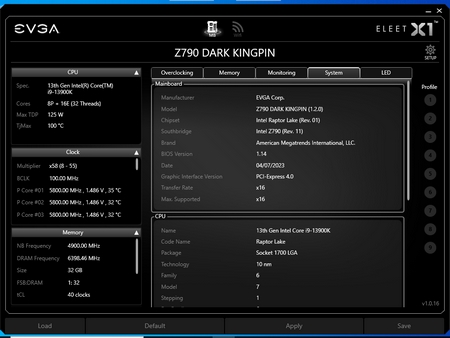
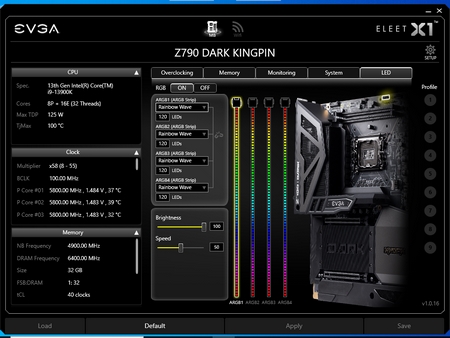


.png)

